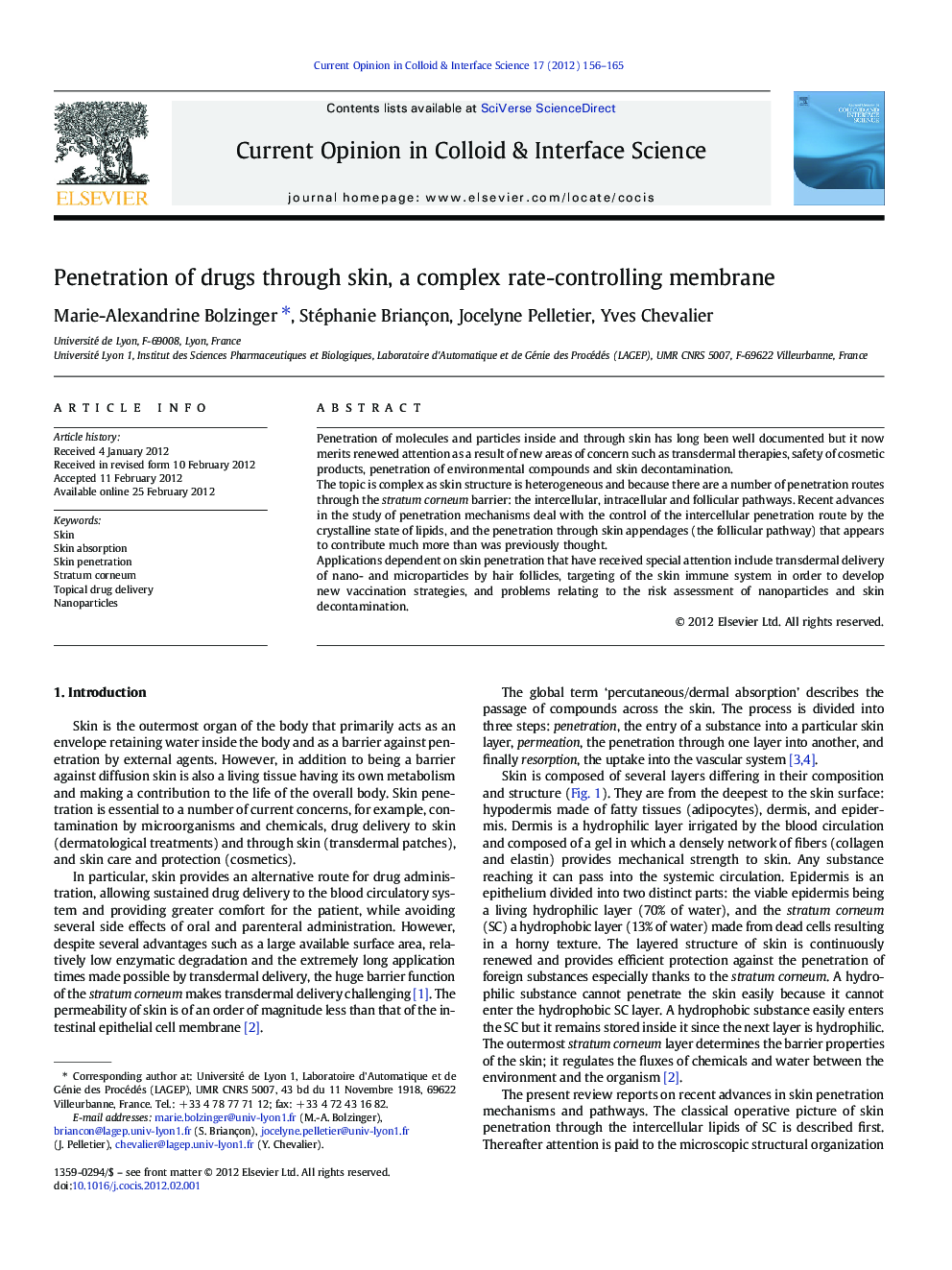| Article ID | Journal | Published Year | Pages | File Type |
|---|---|---|---|---|
| 603255 | Current Opinion in Colloid & Interface Science | 2012 | 10 Pages |
Penetration of molecules and particles inside and through skin has long been well documented but it now merits renewed attention as a result of new areas of concern such as transdermal therapies, safety of cosmetic products, penetration of environmental compounds and skin decontamination.The topic is complex as skin structure is heterogeneous and because there are a number of penetration routes through the stratum corneum barrier: the intercellular, intracellular and follicular pathways. Recent advances in the study of penetration mechanisms deal with the control of the intercellular penetration route by the crystalline state of lipids, and the penetration through skin appendages (the follicular pathway) that appears to contribute much more than was previously thought.Applications dependent on skin penetration that have received special attention include transdermal delivery of nano- and microparticles by hair follicles, targeting of the skin immune system in order to develop new vaccination strategies, and problems relating to the risk assessment of nanoparticles and skin decontamination.
Graphical abstractFigure optionsDownload full-size imageDownload high-quality image (858 K)Download as PowerPoint slideHighlights► Skin penetration through Stratum corneum is controlled by lipids crystalline state. ► Penetration enhancers alter crystalline phases of Stratum corneum lipids. ► Hair follicle is the predominant skin penetration pathway of nano- and microparticles. ► Drugs that penetrate skin by intercellular pathway significantly enter hair follicles. ► Nano- and microparticles allow targeting the skin immune system.
